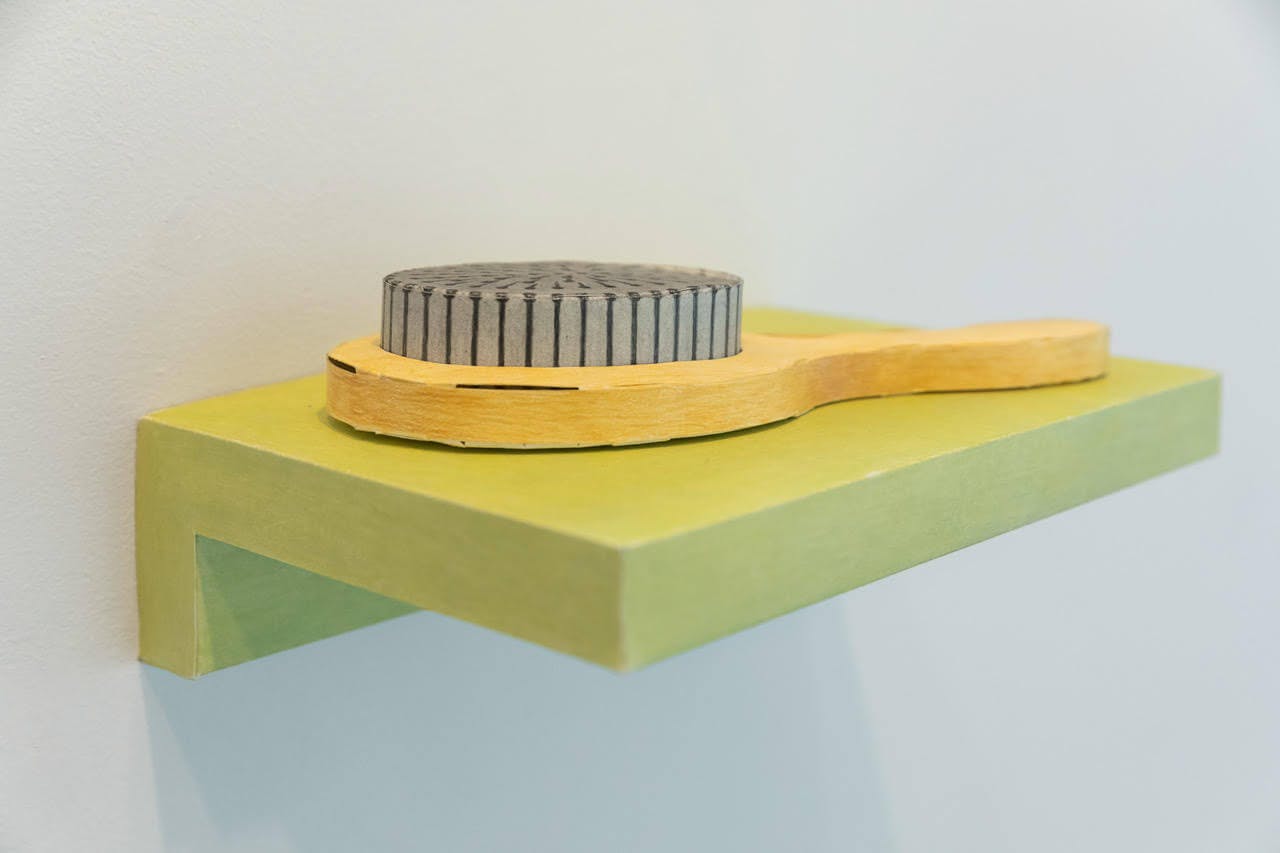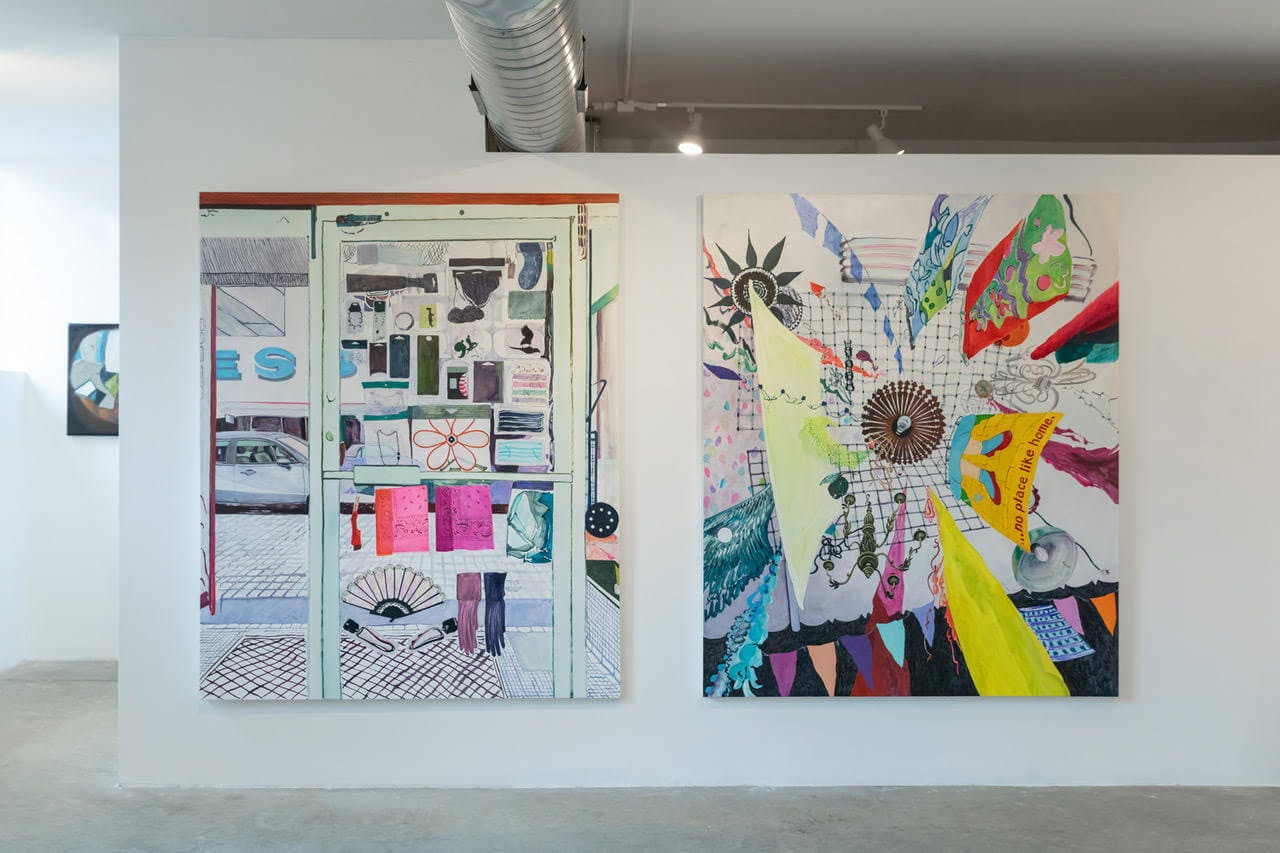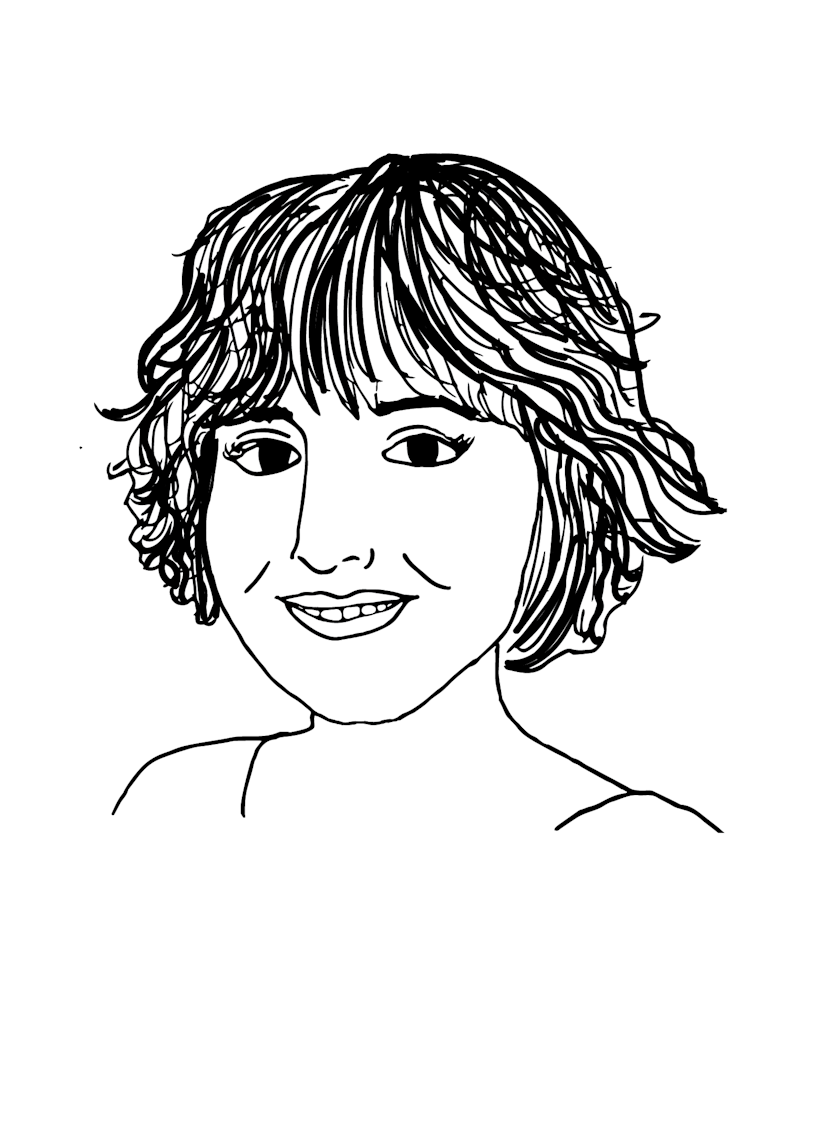If art is, as so many claim it to be, an extension of a person’s unique internal life, their creative subconscious and conceptual concerns made visible, then it has never stood to reason that modes of artistic expression could either be “in” or “out.” So I was pleased to discover that “What’s New In Still Life, Portrait, and Landscape,” a new show at LaiSun Keane curated by poet and critic John Yau, was dedicated to young and emerging artists tackling these once “outmoded” themes. I was further pleased to discover that—rather than conceiving of the concept and selecting artists to match—Yau determined the direction after recognizing the trend occurring naturally while visiting MFA programs and juroring young artist competitions. As he writes in the show’s accompanying catalog essay:
After the rise of modern art in America, and a long stretch of time dominated by Abstract Expressionism, Pop Art, Minimalism, Conceptual Art, and Neo-Expressionism, where direct observation was seldom if ever considered, these young artists were working in genres that had largely been sidelined. For these artists, using imagery derived from the mass media and pop culture seemed of little interest. It was as if [after] years of the art world’s practice of promoting the “New,” this generation of artists recognized how quickly the standards of the avant-garde devolved, replaced by imitation and parody.
With works from artists Lauren Petrick Brooks, Kevin Cobb, Abigail Dudley, Samuel Alexander Forest, Calvin Kim, Meghan Murray, and Lizzie Zelter, the show explores how varied and innovative these genres can be in the current moment, with drawings, sculptures, and paintings both large and small depicting the way we encounter and navigate the small or significant (or, my favorite, small and significant) moments of our lives.
Situated right at the door, Forest’s painted paper sculptures seem prepared for your arrival, or perhaps—as the packed metal lunchbox, neatly folded shirts and briefcase on the floor indicate—your departure out of the gallery and into the simpler, easier, Technicolor life of a 1960s sitcom. There’s a sense of tongue-in-cheek nostalgia here, a theme that runs throughout the show and is especially present in Murray’s Day-Glo-tinged child cowboys in ATOM ROCKETS DECLARED READY FOR COMBAT USE (Dec. 21, 1952) (2022) and C.B.S. BUYS SERIES TV WESTERNS (APRIL 5, 1958) (2023), the latter leaning into wistful kitsch so much as to be painted on a white-picket fence. Petrick Brooks’s hyper-real drain grate in (w)here (2022) also takes me back, though I have to spend a little time considering why it’s making my skin crawl before I realize I’m reminded of Pennywise’s hideout in Stephen King’s IT. Would I have held this association without the close proximity of Murray’s retro tykes? I’m not sure, though the sinister undercurrent feels fresh and apt. What is nostalgia, after all, if not a haunting?
By paralyzing a moment, portrait, landscape, and still-life works are anticipatory by nature; what the artist chooses to include, the details that are omitted, what’s given the spotlight versus what’s caught in shadow are all offered up to the viewer like a held breath, as if the action is poised to continue just as soon as we engage. It becomes interesting, then, to consider just where we are in relation to the scene. Dudley’s brooding cityscapes and domestic interiors cast us as a lonely voyeur glimpsing into warmth and intimacy from a gentle remove, while Zelter’s General Haus (2023) and The Twister (2023) plop us down directly into the action. In these large side-by-side paintings, we’re either looking out from a shop door or up at a ceiling teeming with lamps, banners, and fluttering pinions. Cobb takes it one step further by situating us directly in his skull. With his The Divide (2014), set back into a small nook in the gallery as if to give him privacy, we’re looking through his eyes at a fruitfully scribbled-in notebook, while in Signum Mundi (2023)—a circular painting snuck behind the gallery’s single floating wall—we’re sharing with the artist a moment of reflection, literally. As if caught through a peephole or a camera lens, Cobb’s self portrait is fish-eyed and moodily monochromatic, a distorted perspective that recalls both ’90s Missy Elliott music videos and Jan van Eyck’s sneaky fifteenth-century selfie in The Arnolfini Portrait (1434).
Notably, Kim is the only artist on view to eschew the rituals of the everyday in favor of more surreal ceremonies. His nocturnal dreamscapes—replete with birds, tree stumps, and a mysterious oval recalling the primordial egg—employ the fantastical elements of myth while remaining grounded in our own time with details such as burnt cigarette butts and tidy sliced strawberries. While most of his works on view are paintings, Kim also offers the only ceramic sculpture in the show. Titled Drink the Sky, Dream the Rain (2023), it depicts a rather small (7.5″ x 10″ x 9″) tree stump cradling a delicate little bird. Placed as it is on its back with a found twig standing guard alongside it like a memorial tree, I can’t help but feel, despite the active title, that the bird has died. Perhaps, rather than a message for the little creature, the title acts as an imperative for the viewer. Life is short, the time to drink skies and dream rain and make art is now, it seems to say. What inspires a still life, portrait, or landscape if not a desire to capture something precious or fleeting? It’s an impulse that will never leave us, and nor will—as this show demonstrates—these methods of expression, no matter how many times the wheel of fads turns.
“What’s New In Still Life, Portrait, and Landscape” is on view November 3–December 23 at LaiSun Keane.




